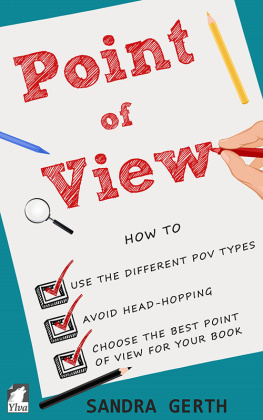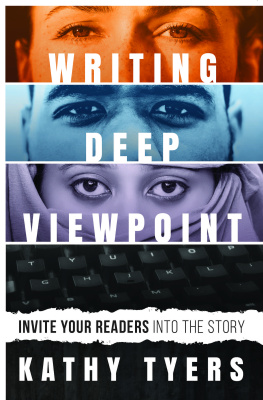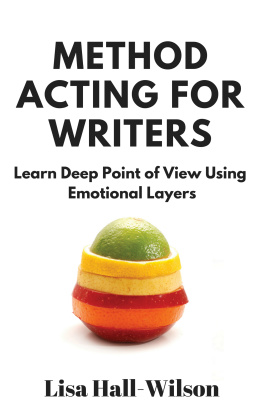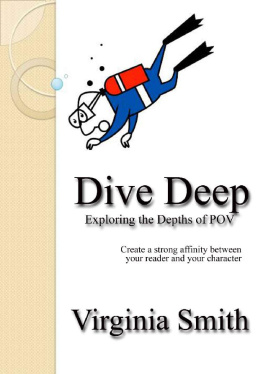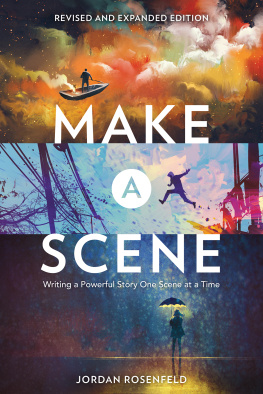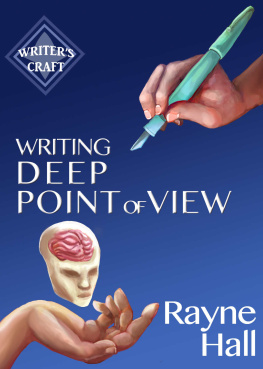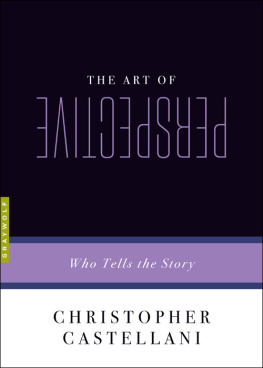2012 by Jill Elizabeth Nelson
All rights reserved.
This handbook may not be reproduced in whole or in part without express written permission or contractual arrangement with the author.
ISBN-13: 978-1470063856
ISBN-10: 1470063859
eBook ISBN: 978-1-62110-049-2
Table of Contents
Have you ever read a book that melded your mind with the main characters psyche? No vague sensation of an invisible narrator inserted itself between you and the point-of-view character. Line by line, scene by scene, you lived in that central characters head. Even if the story was not written in first person, the hero or heroines every experience became yours, and your reading pleasure intensified. Why? How did this happen? What did the writer do to gain this effect?
The technique is called Deep Point of View. In this handbook, well plumb the depths (pun intended) of this fun and fundamental skill.
Warner Brothers employs a little blurb in promotion of their Blu-ray movies: This is how our movies are meant to belived! I say, This is how our novels were meant to belived! Deep POV will help the writer to draw readers into each point-of-view characters mind so thoroughly that they will feel as if they are living inside the characters skin.
Even novice writers are familiar with the concept of Point of View. Most even know the difference between first person and third person. If were really savvy, we understand the concept of tensespast, present, and future. However, Deep Point of View puts basic POV on steroids. The technique tightens, solidifies, and strengthens a manuscript. As a stellar side-effect, many of those pesky problems with show/dont tell will fade away like a bad memory.
I learned this technique from my awesome editor in the school of deadline during the substantive edit of my debut novel, Reluctant Burglar, and my writing has never been the same. Honestly, when she showed me the tips 4 and tricks I wondered where Id been all my lifeor why my publisher picked up my rookie manuscript in the shape they first saw it.
My goal in the following pages is to impart that grand light bulb moment to other writers. Curious? Read on!
This chapter will establish groundwork in basic points of view, persons, and tenses, as well as definitions that will serve us throughout the book. Even if you think you know this material, I challenge you to absorb it afresh, in order to prepare yourself for the next steps.
The term Point of View is defined as a position from which something is considered or evaluated, a standpoint, or a place of perception. In fiction writing, the position from which anything is considered in any given scene should be the character through whose head we are viewing events. That characters psychehis or her very soulis the standpoint from which everything else in the scene is presented and evaluated. This particular character is the point-of-view character. For simplicity, I will refer to point of view as POV and the point-of-view character as POVC.
In order to remain firmly inside the POVCs head, nothing in a scene can be presented for reader consideration that is outside that characters awareness. When judging writing contest entries, I often see POV violations similar to:
At a long creak from the attic above, Karen froze, heart pounding. Was that a footfall? Unaware, Karens hold on the vase of flowers relaxed, and she dropped it.
If Karen is the POVC and isnt consciously aware that her hold on the vase slipped then it is a POV violation to mention that she dropped the vase until the very moment when she realizes her unconscious action. The segment could be rewritten like this:
Karen froze, heart pounding. Was that long creak a footfall in the attic above? She held her breath.
Crash!
Cool moisture splashed her ankles. Karen shrieked and jumped back.
That sound hadnt come from above. She gazed toward her feet at a tangle of bright blooms scattered amid shards of glass and splotches of water on the hardwood floor. Her heart sank. What a fraidy-cat she was. One little out-of-the-ordinary sound and she dropped the beautiful vase of flowers Glen had given her.
See how this sequence flows in a linear and logical fashion with only what Karen sees, knows, thinks, and experiences in the moment? We remain firmly in the now. We havent run ahead of events, lagged behind, or inserted information that could only come from an invisible narrator. How much more poignant this event becomes when we stay inside the POVCs head, and how much more powerful to write it in Deep POV, as in the above segment.
Another type of POV violation I commonly see is something like this:
Bill turned away and didnt notice Chet slip out the door.
If we are in Bills POV, and he didnt notice Chets sneaky retreat, then the incident cannot be mentioned. So how does the writer convey to the reader that Chet has escaped? Ways exist to write this segment, maintain POV, and still make the reader aware of this vital information. Again, my fix will be written in Deep POV, even though it is possible to write the segment in shallow POVtelling, rather than showingand yet avoid a POV violation. Later in the book, well look at before and after segments that illustrate the difference between shallow, telling POV and Deep POV.
Here is my rewrite:
Fists clenching and unclenching, Bill gazed around the kitchen. Where was that louse? He had to be here somewhere.
Chet, I need to talk to you. Now!
Silence answered Bills shout.
He strode toward the living room. A gentle whoosh of air behind him stopped him in his tracks. Bill whirled. The screen door was settling back into place. The coward was on the run.
Now the reader knows that Chet slipped out the door, but we havent left Bills POV in order to convey that information. Plus, by refusing to take the lazy way out and tell the information through a POV violation, the story becomes much more immediate and exciting. Isnt the result worth the extra effort?
Other basic POV violations could include phrases like the following:
Face flushed, eyes spitting fire
or
Gaze crackling, a low growl rumbled from his throat.
Unfortunately for POV maintenance, the POVC cannot know that his or her eyes are blazing or spitting fire. The character cant even know the color of his or her face. The character can, however, know how the flushed face feels or be aware of other telltale signs of anger, and thats the angle from which to approach the description.
Fixes could include something like the following:
Face hot, Heidi slammed the drawer.
or
Eyes narrowed, nostrils flared, a low growl rumbled from his throat.
Now we have remained inside the POVCs head, yet accurately portrayed the characters emotional state.
#
Next, lets take a look at the various persons in which a story can be told.
First Person
In this person, the viewpoint character is I. A story told in first person requires that nothing can be heard, seen, or experienced except through the senses of the character relating the story.
However, a first-person narrative does allow for the viewpoint character to skip ahead in the sequence of events, and make a comment like, If I had known, because first person can have something of a diary or journal feel, but be aware that these journaling lines are necessarily telling rather than showing. Weigh the moment, and decide if the segue into telling is worth the loss of immediacy.
But, you protest, isnt first person automatically Deep POV? This is a common misperception, and I used to agreeuntil I started writing a first person manuscript. Suddenly, I discovered myself employing my entire arsenal of Deep POV techniques in order to make the story even more immediate. It is possible to write shallow and telling first person. Who knew? We will cover this issue in greater depth, complete with examples, in the final chapter.



